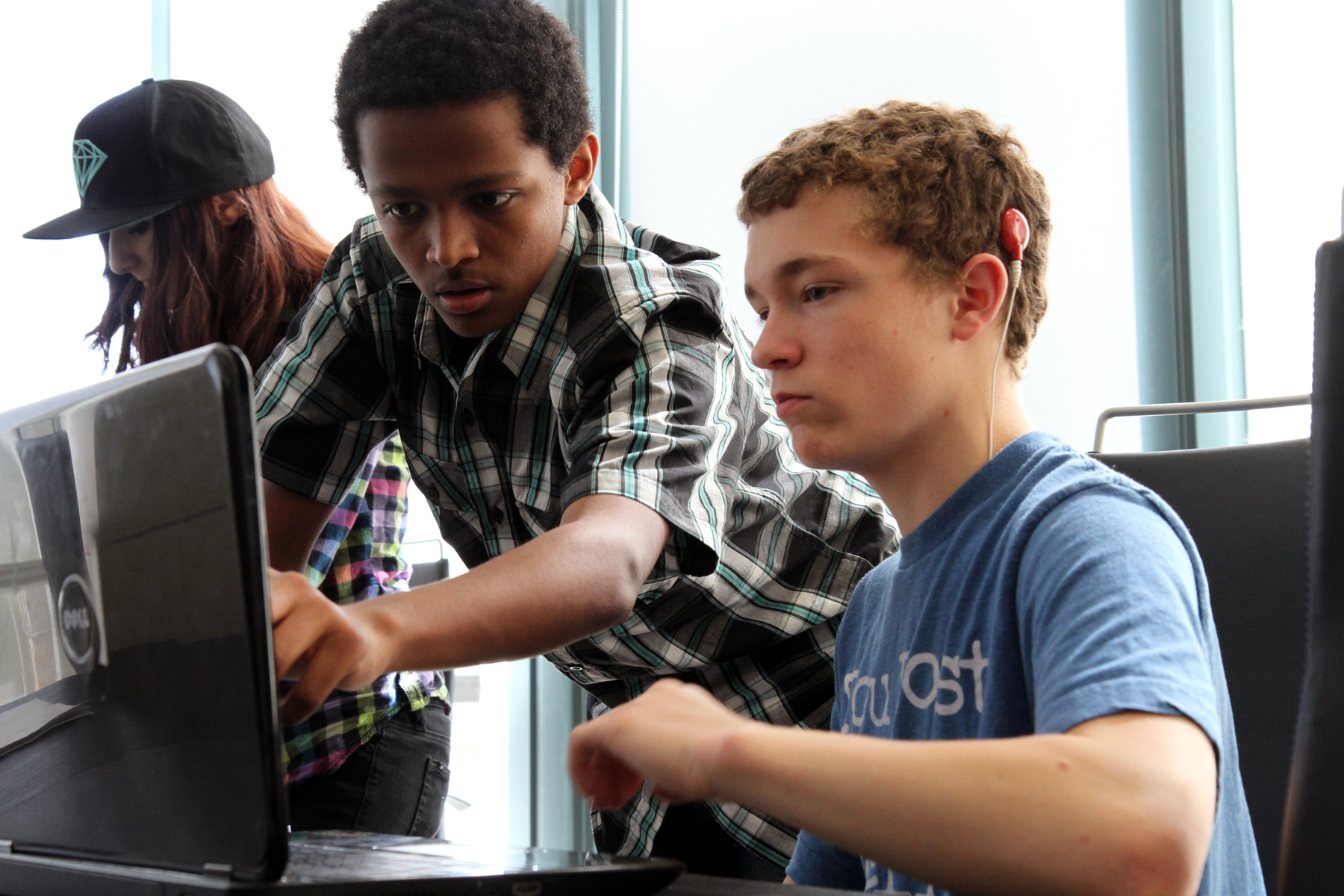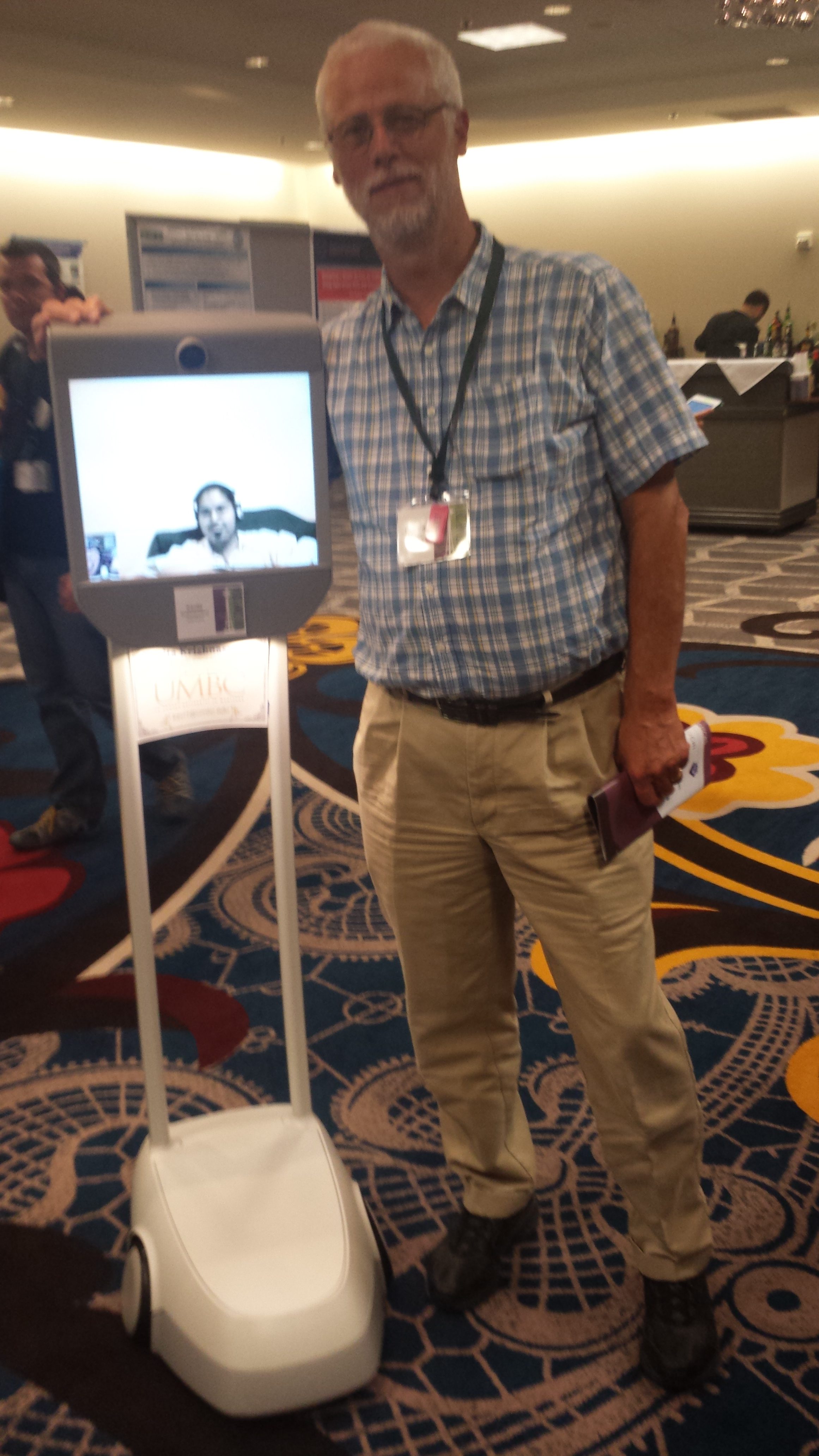Expanding the Pipeline: Broadening Participation in Computing Fields by Preparing More Professionals with Disabilities
By Richard Ladner and Sheryl Burgstahler, University of Washington

AccessComputing hosted mock interviews.
Research and practice focused on broadening participation of underrepresented groups have revealed evidence-based strategies to include career awareness, academic preparation, mentoring experiences, research engagement, internships and other work-based learning opportunities, and other support at transition steps and all levels of education and employment. Most broadening participation efforts have focused on women and underrepresented minorities. However, for more than 10 years, AccessComputing has been funded by the National Science Foundation (NSF) to increase the successful participation of students with disabilities in academic programs and careers. Project leaders have found that much of the research on challenges and interventions for women and minorities applies to people with disabilities. Principal investigator (PI) Richard Ladner and co-PI Sheryl Burgstahler are joined in the current grant-funded project by co-PIs Andrew J. Ko and Jacob O. Wobbrock from the University of Washington Information School. Together, we bring expertise in computing, education, and research; technology for people with disabilities; and applications of evidence-based practices with multiple stakeholders that include faculty, technology companies, and students with disabilities.
People with disabilities are underrepresented in computing fields. According to the National Center for Education Statistics (Table 311.10), in 2012, engineering/computer science/mathematics fields had about 10.6 percent of undergraduates and 4.8 percent of graduate students with disabilities. This is in contrast to the approximately 15 percent of K-12 students who are identified as disabled. Challenges faced by students include access to keyboards and mice for those with limited mobility, content within images for students who are blind, and audio content for students who are deaf or hard of hearing. These access problems have well-documented solutions within guidelines for accessible IT. Success stories of the relatively few individuals with disabilities in computing fields—some supported by earlier NSF grants—demonstrate that opportunities do exist for those who develop academic and self-determination skills and successfully overcome barriers imposed by inaccessible facilities, curricula, and IT; inadequate academic supports; and lack of encouragement. For computing courses, integrating content about how IT can improve the lives of individuals with disabilities has the potential to increase the interest of students who may not otherwise consider a computing field.

Students learn programming on campus at an AccessComputing event.
AccessComputing addresses underrepresentation by providing multiple activities for students with disabilities that include online and on-site mentoring and near-peer support in an active online community, internships in industry, research experiences, computing conference engagement, and career development activities. Participants can choose to engage in an ongoing longitudinal study that dates back to 1993. Results of the 2016 Report of the AccessSTEM/AccessComputing/DO-IT Longitudinal Transition Study (ALTS) suggest that such interventions, particularly when a person engages in multiple interventions, lead to higher levels of success in college and careers for students with disabilities (see www.uw.edu/doit/2016-report-accessstemaccesscomputingdo-it-longitudinal-transition-study-alts).
In the following stories, two AccessComputing participants share, in their own words, the value of specific experiences in AccessComputing:

Daniel Seita
Daniel Seita, a computer science Ph.D. student at the University of California, Berkeley, shares how engagement in AccessComputing led to a change in his career path.
In retrospect, I am surprised at my life’s journey so far, as I had long viewed myself as a future doctor or lawyer. It was not until after I had attended AccessComputing’s Summer Academy for Advancing Deaf and Hard of Hearing in Computing in 2011 that I seriously considered a career in computer science.
My experience at the Summer Academy, where I was surrounded by talented deaf students and did not have to worry much about communication, provided a welcome social change from college. I attended Williams College from 2010 to 2014 and was its first (and only) deaf student. Throughout my years at Williams, they provided me with excellent interpreting and note-taking services for my classes. The computer science professors were also friendly and supportive. In the summers after the Summer Academy, I participated in two NSF-funded Research Experiences for Undergraduates, which, along with my academic record, helped me get in Berkeley’s Ph.D. program.
Every now and then, I think about how unbelievable it is that I got to where I am today. My journey into the world of computer science would not have been possible without all the help and support I’ve received in my years of school. My support network includes all my interpreters, my note-takers, deaf teachers and assistants, AccessComputing, and, of course, my parents. From elementary, middle, and high school at Guilderland, to four years at Williams, and now at Berkeley, they have remained my strongest supporters. [http://www.uw.edu/accesscomputing/resources/accesscomputing-news-january-2015/accesscomputing-student-profile-daniel-seita]

Kavita Krishnaswami’s telepresence robot (left) alongside Richard Ladner (right).
Kavita Krishnaswami is a Ph.D. student at the University of Maryland, Baltimore County. Her disability makes it difficult to travel, and she received financial support from AccessComputing to remotely “attend” several professional conferences and engage on a panel and in small groups. She shares one of her experiences in the below paragraphs.
Attending the 2014 ACM International Joint Conference on Pervasive and Ubiquitous Computing (UbiComp 2014) in Seattle, Washington, via the Beam Telepresence Robot was an exceptional and memorable experience. Although I was unable to attend the conference in person, I participated in a user study, which provided me the opportunity to attend and interact with other attendees remotely. The telepresence initiative user study was organized by the co-chairs Carman Neustaedter, from Simon Fraser University in Canada, and Gina Venolia, from Microsoft Research.
The Beam robot, created by Suitable Technologies, allowed me to have mobility by using a wheeled battery-powered device with voice conferencing and telepresence capabilities. The Beam robot includes two wide-angle cameras, a six-microphone array with echo-canceling and noise reduction, a 17-inch LCD screen, an eight hour-battery, two dual-band radios providing Internet connectivity, and a built-in speaker coupled to a mobile platform. The Beam has great maneuverability and can be driven using a mouse, keyboard, or Xbox controller. Participants were also given the option to personalize their Beam robot with a label that displayed their name and contact information.
I had the opportunity to meet amazing researchers from across the country as well as individuals from China, England, Sweden, and Italy and engage in discussions about varied and interesting research projects as a bridge to meaningful mentorship and guidance. Although I have spoken with Richard Ladner via phone, Skype, and email for more than 10 years, it was exciting and gratifying to meet physically him for the first time, albeit in virtual space thanks to the Beam robot.
Using the Beam robot provided a sense of dynamic and real-time presence in the actual conference environment. It was great to be able to join discussions after the presentations, and I enjoyed having autonomy and independence while driving and operating the Beam robot.
Nevertheless, the experience wasn’t perfect. I would often lose my Internet connection inside the elevator and between presentation sessions when there was significant traffic on the network. Other challenges included audio and video problems. For example, feedback from my microphone caused disturbances in the sound quality, so I had to frequently adjust the volume on the microphone. Although I felt totally immersed and connected at the sessions of the conference, I had a sort of “jet-lag” because of the time difference between Maryland and Seattle, and I felt a sense of disconnect because of the differences between my home and the conference site. [http://www.uw.edu/accesscomputing/resources/accesscomputing-news-january-2015/attending-conferences-robots]
Besides working with students, AccessComputing helps faculty members be more prepared to work with students with disabilities in their courses and to include accessibility related content in their classes to ensure that computing professionals in the next generation are knowledgeable about creating products that are accessible to individuals with disabilities. The project also works with technology companies to increase the accessibility of their products and to encourage them to hire individuals with disabilities and those that have expertise in accessible design.
For more information about AccessComputing activities and resources and about how you can engage in these efforts, check out the project website at http://www.uw.edu/accesscomputing. In particular, computing educators at K-12 and postsecondary levels can join the Computing Faculty, Administrator, and Employer Community of Practice to increase their knowledge about disabilities and make changes in computing departments and companies that lead to more inclusive practices. Send a request to accesscomp@uw.edu and join us in fostering synergistic and lasting relationships among stakeholders to promote systemic changes toward inclusiveness in computing education and careers.
About the Authors
Richard Ladner is professor emeritus in the Paul G. Allen School of Computer Science & Engineering at the University of Washington. Sheryl Burgstahler directs Accessible Technology Services and is an affiliate professor in the College of Education at the University of Washington.



